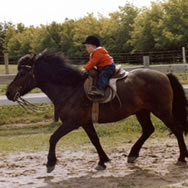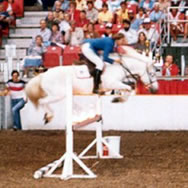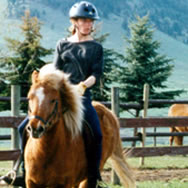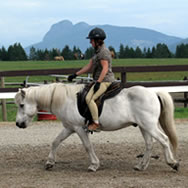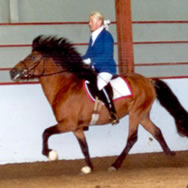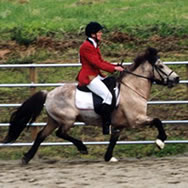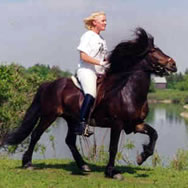About Icelandic Horses
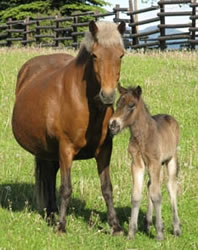 Selective breeding for over one thousand years has created a unique breed of horse. More than one millennium of breeding free of outside bloodlines has produced one of the purest breeds of horse on earth. [Note! Click on images to see larger views.]
Selective breeding for over one thousand years has created a unique breed of horse. More than one millennium of breeding free of outside bloodlines has produced one of the purest breeds of horse on earth. [Note! Click on images to see larger views.]
Its easy going, friendly disposition make the Icelandic Horse the ideal companion for the entire family. With no natural predators in its home country the horse has shed much of its natural fight and flight instinct.
Icelandic Horses are very popular in Europe with close to 80,000 of them on the European continent, the same number in Iceland and they are catching on in North America, where roughly 2,000 can be found.
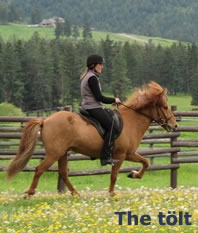 The Gaits: Beside the traditional walk, trot and canter, the Icelandic Horse performs two extra gaits, the tölt and flying pace. The tölt is an extremely smooth four-beat gait, much like the running walk or rack, that allows the rider a virtually bounce-free ride at speeds up to 20 mph. The tölt is a natural gait, no artificial aids are needed and you often see foals tölting in the pasture.
The Gaits: Beside the traditional walk, trot and canter, the Icelandic Horse performs two extra gaits, the tölt and flying pace. The tölt is an extremely smooth four-beat gait, much like the running walk or rack, that allows the rider a virtually bounce-free ride at speeds up to 20 mph. The tölt is a natural gait, no artificial aids are needed and you often see foals tölting in the pasture.
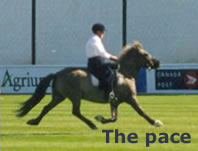 Depending on their breeding, many Icelandic Horses also show the flying pace. The pace is a lateral racing gait and horses reach speeds of up to 30 mph.
Depending on their breeding, many Icelandic Horses also show the flying pace. The pace is a lateral racing gait and horses reach speeds of up to 30 mph.
Versatility: Icelandic horses are equally at home taking the children for a ride, in the show ring or trekking in the mountains. Centuries of isolation in Iceland has produced an extremely sure footed horse who is agile on rough terrain and shows great reserves of stamina.
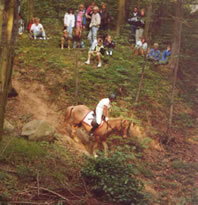 Although only 13 to 14 hands, the Icelandic Horse weighs between 800 and 1000 pounds and was bred to carry Vikings across Iceland. High bone density and strong sturdy legs enable them to carry an adult rider comfortably all day long. Their willingness to please makes the Icelandic Horse the ideal family companion.
Although only 13 to 14 hands, the Icelandic Horse weighs between 800 and 1000 pounds and was bred to carry Vikings across Iceland. High bone density and strong sturdy legs enable them to carry an adult rider comfortably all day long. Their willingness to please makes the Icelandic Horse the ideal family companion.
Icelandics are very easy keepers and a thick winter coat protects them in cold climates. Slow to mature they are usually not ridden until they are four or five years old, but it is not unusual to ride them into their late twenties or early thirties. A great variety of colours, including many shades of dun and pintos can be found in the breed.
Both the United States Icelandic Horse Congress and the Canadian Icelandic Horse Federation are affiliated with FEIF (International Federation of Icelandic Horse Associations), the European umbrella organization for Icelandic Horse Associations in Europe and North America. World Championships for Icelandic horses are held every two years in one of the member countries and smaller local shows invite riders and spectators to enjoy the Icelandic horse throughout the year. All Icelandics are registered in their country of origin.
